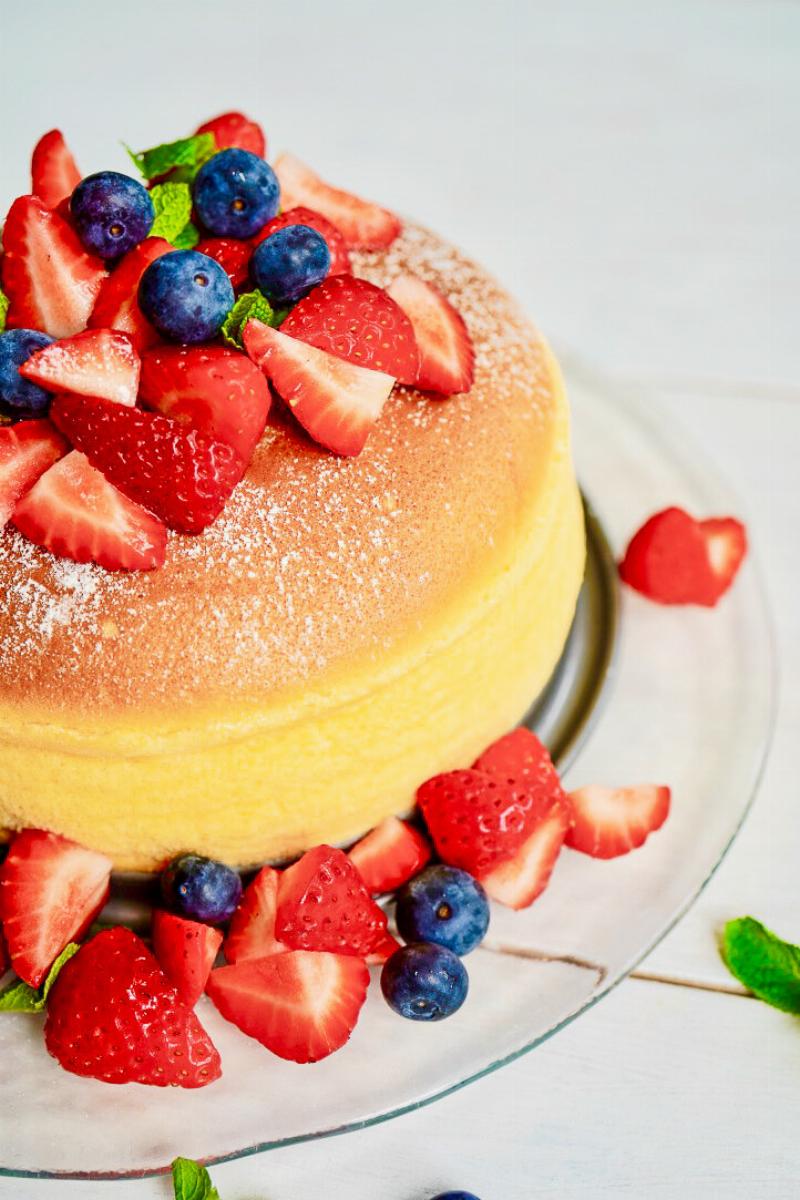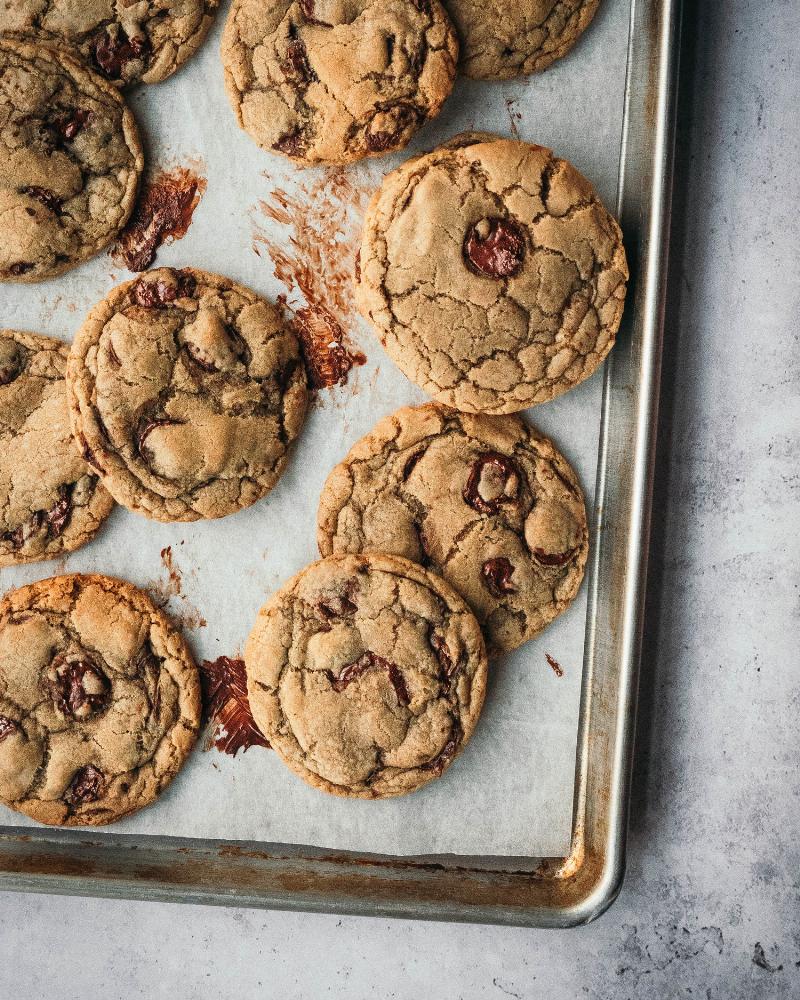Baking a cake that’s light, airy, and fluffy is a dream for every baker. It’s the difference between a dense, heavy brick and a delicate cloud of sweetness. But achieving that perfect texture isn’t always easy. It’s a science, an art, and sometimes, it feels like pure magic. This guide will unlock the secrets to baking fluffy cakes every single time, transforming you from a cake novice to a true cake master. Get ready to impress your friends and family with your newfound baking prowess!
Table Of Contents
Getting a fluffy cake isn’t just about throwing ingredients together; it’s about understanding the why behind each step. Think of it like building a house – a strong foundation is key. And in baking, that foundation lies in the precise combination of ingredients and techniques. From understanding the role of each ingredient to mastering the perfect mixing method, we’ll cover all the Tips For Baking Fluffy Cakes you need to know. Ever wondered why some cakes rise beautifully while others fall flat? We’ll delve into the science of leavening, exploring the magic of baking powder and baking soda. And for those looking to expand their gluten-free baking repertoire, we’ll even touch on some specialized techniques. So, are you ready to embark on this fluffy cake adventure?
The Importance of Room Temperature Ingredients
One of the most overlooked tips for baking fluffy cakes is the temperature of your ingredients. Using room temperature ingredients, especially butter and eggs, ensures they emulsify properly, creating a smooth batter that traps air effectively. This trapped air is what expands during baking, giving you that sought-after fluffy texture. Imagine trying to mix cold, hard butter into sugar – it’s a struggle! But soft, room temperature butter creams beautifully with sugar, incorporating air as you whisk. This creates a light and airy base for your cake. Similarly, room temperature eggs blend seamlessly into the batter, contributing to a uniform texture. Cold eggs, on the other hand, can cause the batter to separate, leading to a denser, less fluffy cake. If you’ve ever wondered why your cakes sometimes have a slightly curdled appearance, cold eggs might be the culprit.
 Room Temperature Butter and Eggs for Fluffy Cakes
Room Temperature Butter and Eggs for Fluffy Cakes
Mastering the Art of Whisking
Whisking is more than just combining ingredients; it’s about incorporating air, creating a network of tiny bubbles that give your cake its lift and lightness. Think of it like whipping cream – the more you whisk, the more air you incorporate, resulting in a fluffy, voluminous texture. The same principle applies to cake batter. When creaming butter and sugar, vigorous whisking is essential to create a light and airy mixture. This process not only dissolves the sugar but also traps air bubbles, creating a fluffy base for your cake. Don’t rush this step! Take your time and whisk until the mixture is pale and creamy. This indicates that enough air has been incorporated. Similar to how to fix grainy frosting, achieving the right texture through proper mixing is essential for a successful outcome.
The Science of Leavening Agents: Baking Powder vs. Baking Soda
Leavening agents are the key to a fluffy cake. They create the air bubbles that make your cake rise. But not all leavening agents are created equal. Baking powder and baking soda are both commonly used, but they work differently. Baking powder is a complete leavening agent, meaning it contains both an acid and a base. It requires only moisture to activate, making it a versatile choice for most cakes. Baking soda, on the other hand, requires an acidic ingredient like vinegar or lemon juice to activate. Using the correct leavening agent is crucial. If you’re using baking soda, ensure your recipe includes an acidic ingredient. Otherwise, your cake might not rise properly. For those exploring gluten-free baking, understanding how leavening agents interact with gluten-free flours is essential for achieving the desired texture. Much like What are the best gluten-free baking hacks?, understanding the nuances of gluten-free baking can be transformative.
 Baking Powder and Baking Soda in Spoons
Baking Powder and Baking Soda in Spoons
Folding: The Gentle Giant of Baking
Once your dry and wet ingredients are combined, the folding technique becomes crucial. Overmixing can develop gluten, leading to a tough cake. Instead, fold the batter gently, using a spatula to incorporate the dry ingredients without deflating the air bubbles you’ve worked so hard to create. Imagine you’re gently incorporating whipped cream into a mixture – you wouldn’t want to stir vigorously and lose all that precious air. The same principle applies to cake batter. Fold gently, lifting the batter from the bottom and turning it over onto itself. This method ensures the ingredients are combined evenly while preserving the airy texture. Proper folding is crucial to achieving a fluffy texture. Correct measurements, as discussed in How to use baking scales for better accuracy, also contribute significantly to a successful bake.
The Oven: Your Cake’s Sauna
The oven temperature plays a vital role in the baking process. A properly preheated oven ensures even baking and a consistent rise. Just as How to properly preheat an oven for baking suggests, preheating is vital. Opening the oven door too often during baking can cause temperature fluctuations, leading to a sunken or uneven cake. Patience is key – avoid opening the oven door until the recommended baking time has almost elapsed. Resist the temptation to peek!
 Preheated Oven Ready for Baking
Preheated Oven Ready for Baking
Avoiding Common Cake Disasters: Troubleshooting Tips
Even with the best intentions, sometimes cakes don’t turn out as planned. Here are a few troubleshooting tips to help you avoid common cake disasters:
- Dense Cake: This often indicates overmixing or not enough leavening agent. Be mindful of your mixing technique and double-check your measurements. Using the correct amount of baking powder, as detailed in how to use baking powder correctly, is crucial.
- Sunken Cake: This could be due to opening the oven door too frequently, underbaking, or using too much leavening agent.
- Dry Cake: Overbaking is the most common culprit for dry cakes. Use a toothpick to check for doneness – it should come out clean.
Baking Fluffy Cakes: A Recap
Baking fluffy cakes is about combining science and art. By understanding the role of each ingredient and mastering the essential techniques, you can achieve perfectly airy and delicious cakes every time. From using room temperature ingredients to mastering the gentle art of folding, each step contributes to the final product. Remember to preheat your oven properly and avoid opening the door too often during baking. With practice and attention to detail, you’ll soon be baking fluffy cakes that are the envy of everyone.
So, go ahead, embrace the joy of baking, and enjoy the delicious rewards of your fluffy cake creations!

Pingback: The Importance of Room Temperature Ingredients in Baking - Bestbaking Recipes